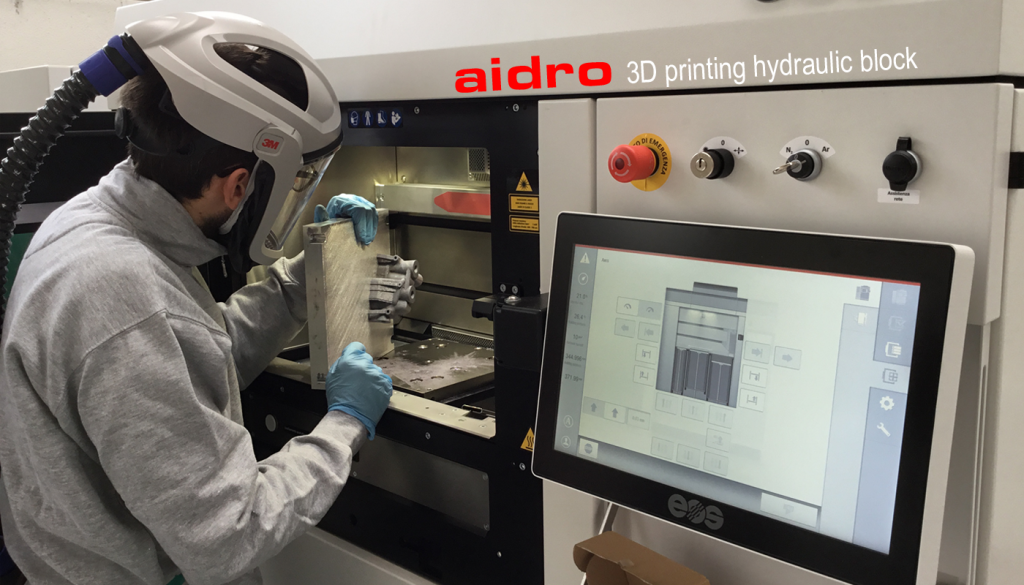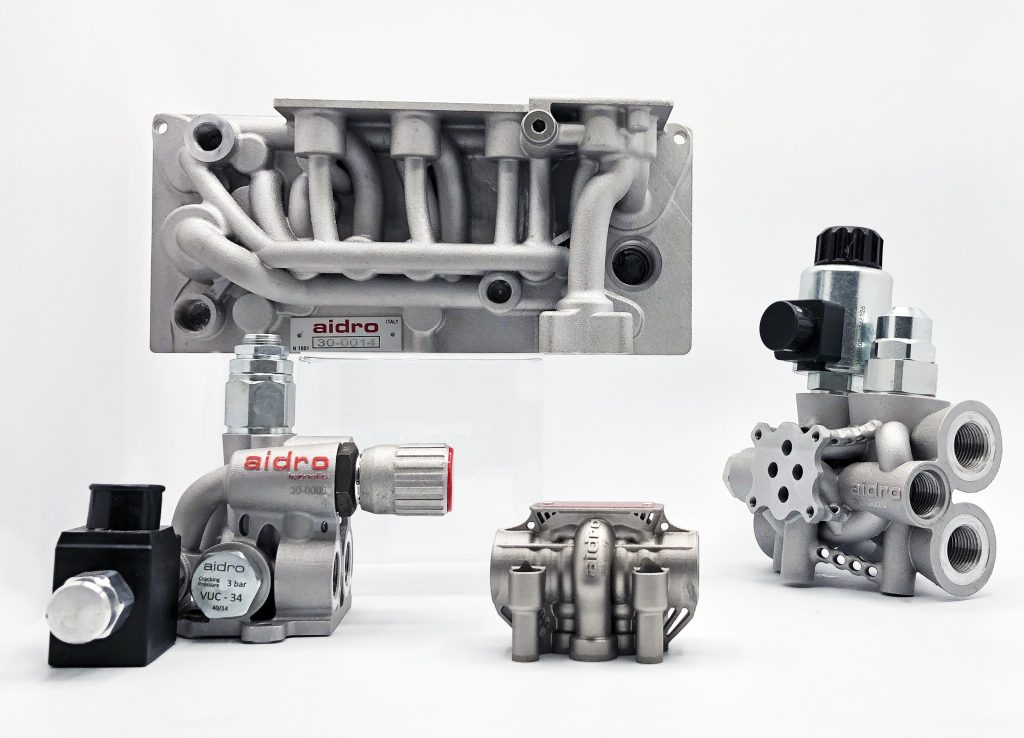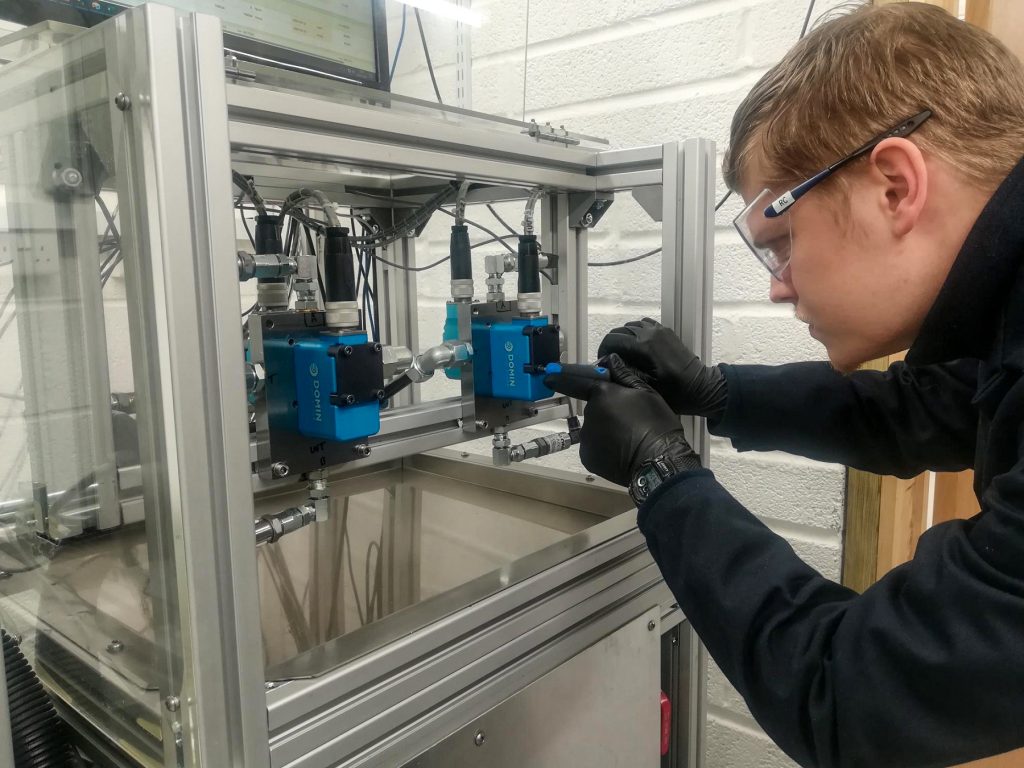Industrial 3D printer manufacturer Desktop Metal has announced the acquisition of hydraulic and fluid power system developer Aidro.
As a self-professed “pioneer” of additive manufacturing in the fluid power sector, Aidro specializes in turning outdated hydraulic designs into consolidated, lightweight, 3D printed alternatives. Having been bought by Desktop Metal, the firm is now seeking to harness any extra backing it can get, to improve its penetration within 3D printing’s emerging oil, gas, energy and industrial markets.
“We are thrilled to join forces with Desktop Metal,” explains Tommaso Tirelli, Co-CEO and VP of Business Development at Aidro. “This partnership will enable us to continue investing in the expansion of additive manufacturing for next-generation hydraulic solutions that disrupt massive industries such as oil, gas and aerospace.”

Adopting ‘Aidrolic’ 3D printing
Since it was founded in Northern Italy back in 1982, Aidro has established itself as a manufacturer of the hydraulic components used within the high-tech industrial, energy and aerospace sectors. Until just four years ago, the company’s production process revolved around ordinary industry-standard techniques, but in 2017 it changed tack, when it began to additive manufacture many of its lines.
Since adopting LBPF to produce these hydraulic parts, Aidro says that it has not only been able to reduce their lead times, but position ‘internal channels’ within them that optimize their performance. Having made the switch, it now 3D prints everything from hydraulic valve blocks, spools, high-pressure manifolds and heat exchangers to steel watches, while doing so on-demand, to client specifications.
Aidro also leverages the technology to manufacture industry-specific parts like rotary valve bonnets and servofly T4/1 adapters, which are targeted towards the energy, maritime and aerospace sectors respectively. The latter, which are SLS rather than PBF 3D printed, found fame in August 2019 when they were used to help a disabled pilot to fly again, acting as a cockpit ‘plug-and-fly’ control system.
Elsewhere, the company has continued to invest in its additive manufacturing facilities, packing its dedicated division with printing and scanning technologies for producing spares and prototypes on-demand, but following its acquisition by Desktop Metal, Tirelli says that it now has the resources needed to take the “next step in its AM evolution.”
“AM offers benefits unmatched by conventional manufacturing, and once Aidro realized its advantages, we quickly allocated resources to develop expertise and take advantage,” said Tirelli. “With access to Desktop Metal’s scale and industry-leading AM 2.0 technology portfolio, including its volume production-focused metal binder jetting solutions, we’re thrilled at the growth potential for Aidro.”

Desktop Metal’s growth continues
After its $2.5 billion merger with Trine Acquisition in December 2020, Desktop Metal went public on the NYSE, in a move that saw it raise $580 million in funding. Leveraging its newfound capital, the firm has since gone on to acquire multiple subsidiaries under the guise of its wider ‘AM 2.0’ strategy, with the stated aim of opening further applications to its 3D printing users.
Thus far, Desktop Metal’s highest-profile purchase has been ExOne, which it agreed to buy for $575 million in cash and shares just last month. Once completed, the deal will see two of the sector’s biggest binder jetting firms join forces, and at the time it was agreed, Desktop Metal’s CEO Ric Fulop said that it would help “increase the penetration of the technology.”
Binder jetting aside, the company has bought into other areas of 3D printing too, acquiring EnvisionTEC for $300 million last year to enter the DLP market, before taking over Adaptive3D to improve its material portfolio. The firm has also invested heavily in expanding into the healthcare sector, acquiring Beacon Bio as well as establishing Desktop Health, a subsidiary it sees as a key future revenue driver.
With its acquisition of Aidro, however, Desktop Metal is not just buying its facilities, but inheriting its expertise, as well as its ISO9001 and AS/EN9100 certifications, which are particularly relevant within aerospace. According to Fulop, the deal therefore allows Desktop Metal to better support its clients with “proprietary design and application know-how,” in what he describes as “killer applications for AM 2.0.”
“Aidro brings a talented team with decades of experience in hydraulics and fluid power systems and a passion for leveraging AM to deliver performance advantages,” concluded Fulop. “We’re excited about the acquisition and look forward to advancing AM 2.0 for high-volume production of hydraulics, valves, fluid power systems, and many more end-use parts in development with Aidro.”

Optimizing hydraulic design
Using 3D printing, many hydraulic system manufacturers are starting to identify new ways of integrating internal channels into their products that improve both their weight and performance. Earlier this year, fluid power system producer Domin revealed that by adopting Renishaw metal 3D printing, it had been able to achieve just this, and manufacture high-performance servo valves.
Designed to control hydraulic fluid by turning signals into pressure, the devices were built to be 25% more powerful than conventional valves, while being around a quarter of the size. The redesigned units also cost a third less than normal, and have the potential to save up to one tonne of CO2, making them seem eco-friendly, in a fluid power sector that accounts for 300 million tonnes of the gas per year.
Earlier, in March 2020, GKN Additive also reported 3D printing a hydraulic adapter block, which it redesigned to weigh 80% less than its traditionally-manufactured counterpart. By employing Design for Additive Manufacturing (DfAM) principles, the firm was able to reduce the amount of material needed for the build, as well as its cost, while improving its overall functionality.
To stay up to date with the latest 3D printing news, don’t forget to subscribe to the 3D Printing Industry newsletter or follow us on Twitter or liking our page on Facebook.
For a deeper dive into additive manufacturing, you can now subscribe to our Youtube channel, featuring discussion, debriefs, and shots of 3D printing in-action.
Are you looking for a job in the additive manufacturing industry? Visit 3D Printing Jobs for a selection of roles in the industry.
Featured image shows an Aidro engineer using an EOS M290 3D printer. Photo via Aidro.


